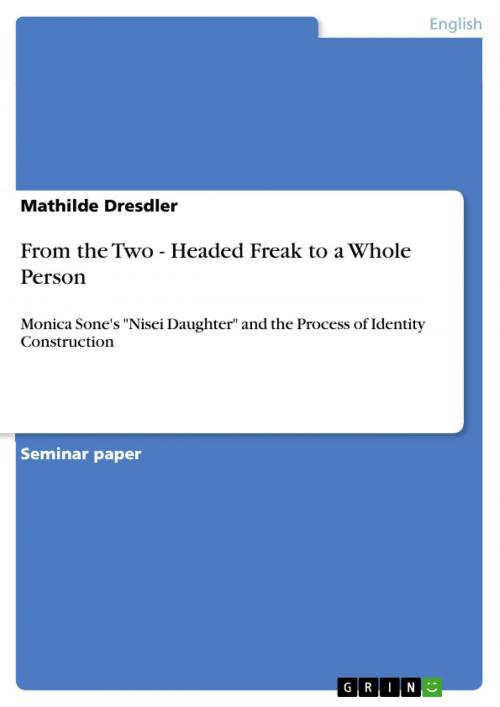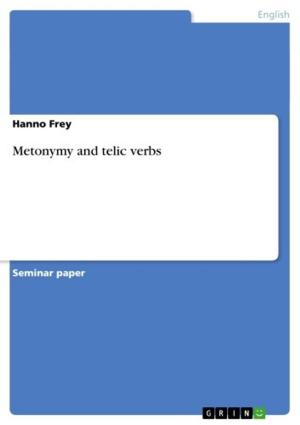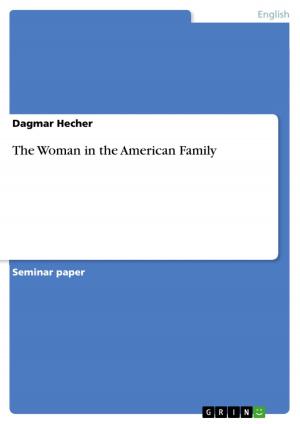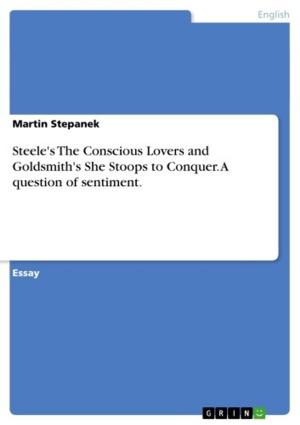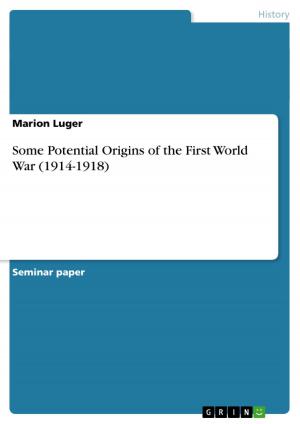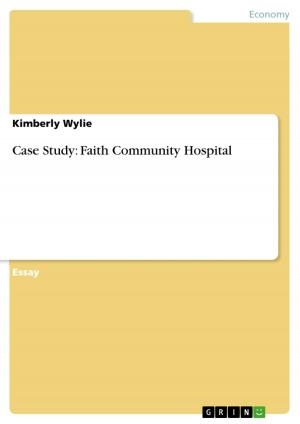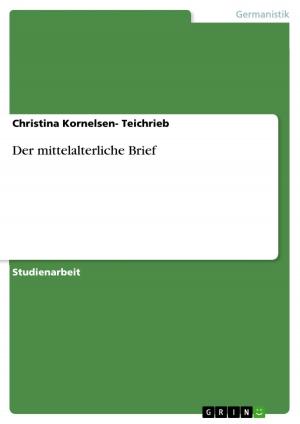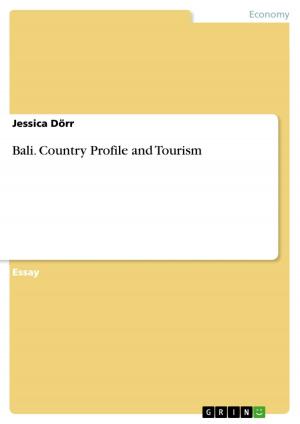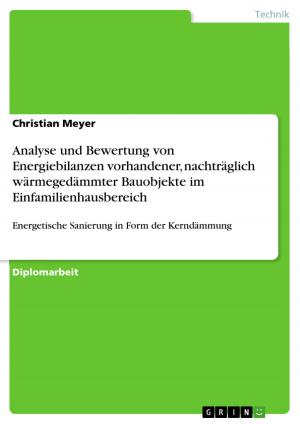From the Two - Headed Freak to a Whole Person
Monica Sone's 'Nisei Daughter' and the Process of Identity Construction
Nonfiction, Entertainment, Drama, Anthologies| Author: | Mathilde Dresdler | ISBN: | 9783640902231 |
| Publisher: | GRIN Publishing | Publication: | April 28, 2011 |
| Imprint: | GRIN Publishing | Language: | English |
| Author: | Mathilde Dresdler |
| ISBN: | 9783640902231 |
| Publisher: | GRIN Publishing |
| Publication: | April 28, 2011 |
| Imprint: | GRIN Publishing |
| Language: | English |
Seminar paper from the year 2010 in the subject American Studies - Literature, grade: 2,0, Dresden Technical University (Amerikanistik), course: Rewriting Stereotypes: Asian American Literature, language: English, abstract: Forty-two years after the internment of more than 100,000 Japanese Americans, about 70 per cent of whom were American citizens, Congress apologized for the injustice that these people had to face. Each internee that was still alive was granted 20,000 $ compensation. Like many other Japanese Americans, Monica Sone had experienced this invasion of personal privacy by authority of her home country. In addition to internment, the second- generation immigrants had to face their coming- to- age in a weird, unreal environment, and were, culturally and linguistically, drifting away from their parents. They were Americans but due to their ethnic heritage and their Asian appearance, not accepted in mainstream America and had to face racist discrimination. The Nisei, the second- generation immigrants, had therefore sustain a variety of difficulties. In her book Nisei Daughter, Monica Sone tries to come to terms with her identity. In the largest part of her autobiography, she describes her life in Seattle prior to the Japanese attack on Pearl Harbor on December 7th in 1942. Her life being unsettled by this incident, Monica Sone writes how she finally made it to reintegrate into U.S. society. Struggling hard to accept her apparently dual identity at the beginning, she learns to live with both parts of her identity- her Japanese heritage and the American part.
Seminar paper from the year 2010 in the subject American Studies - Literature, grade: 2,0, Dresden Technical University (Amerikanistik), course: Rewriting Stereotypes: Asian American Literature, language: English, abstract: Forty-two years after the internment of more than 100,000 Japanese Americans, about 70 per cent of whom were American citizens, Congress apologized for the injustice that these people had to face. Each internee that was still alive was granted 20,000 $ compensation. Like many other Japanese Americans, Monica Sone had experienced this invasion of personal privacy by authority of her home country. In addition to internment, the second- generation immigrants had to face their coming- to- age in a weird, unreal environment, and were, culturally and linguistically, drifting away from their parents. They were Americans but due to their ethnic heritage and their Asian appearance, not accepted in mainstream America and had to face racist discrimination. The Nisei, the second- generation immigrants, had therefore sustain a variety of difficulties. In her book Nisei Daughter, Monica Sone tries to come to terms with her identity. In the largest part of her autobiography, she describes her life in Seattle prior to the Japanese attack on Pearl Harbor on December 7th in 1942. Her life being unsettled by this incident, Monica Sone writes how she finally made it to reintegrate into U.S. society. Struggling hard to accept her apparently dual identity at the beginning, she learns to live with both parts of her identity- her Japanese heritage and the American part.
